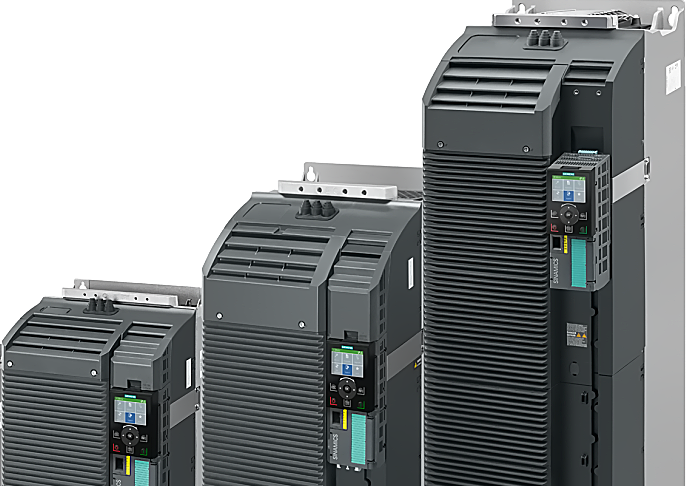
Energy efficiency and power are increasingly becoming the only propellants of business, industry, and even home existence. Variable Frequency Drive (VFD) is also one of the underpinning technologies making this possible. Its name might sound a bit more or less technical, but its functionality actually is quite simple: it is a speed and torque controller of an electric motor that adjusts its power supply voltage and frequency.
But the real power of a VFD is that it is multi-purpose. It can be used nearly everywhere. From saving industry electricity bills to providing more comfort to air conditioners for residential use, its applications are nearly everywhere. In this blog here, we are going to detail variable frequency drive applications in depth, arguing where and why they are useful in everyday life.
What is a variable frequency drive?
First, let us discover what a VFD is, and we can then move on to its applications. A standard electric motor operates at a constant speed if the motor is wired straight from the source supply. The majority of equipment within most applications never calls for the motor to operate at full speed. Incompatibility causes wastage of energy and higher operating costs.
A variable frequency drive solves this issue by varying the speed of a motor to equal the demand of the load. By managing the amount of power that is being drawn into a motor, a VFD conserves energy as well as extends equipment life.
We will discuss some applications of variable frequency drives in industry now.
1. Industrial Applications
The most advanced use of VFDs is by industries, and there are sufficient reasons why. Motors seep into every industry—conveyor belts, pumps, fans, and compressors. These motors would be irrelevant, wasting reams of electricity whether needed or not, if VFDs did not exist.
Utilizing the ability of VFDs, industries are able to:
- Save energy by running machines at the required speed.
- Avoid wear and tear on motors by preventing sudden starting and stopping.
- Maximize productivity with more process control.
- In cement manufacturing, for instance, conveyors operate continuously, carrying raw material. VFD controls the speed of the belt based on production requirements, which prevents energy wastage.
- Industrial processes seem to exhibit some of the greatest applications of variable frequency drives.
2. Pumping Systems
The most prevalent application of VFDs is on pump applications such as farm pumps, water distribution, and sewage plants. Conventional pumps employed valves to regulate the volume of water pumped. This is a wasteful system, as the pump is always operating at full capacity.
Through the use of a VFD, the motor will be capable of varying its speed in a manner that it will only deliver the level of flow required. Apart from saving electricity, pressure surges are eliminated, which may destroy pipes. Under an agricultural environment, for example, irrigation pumps powered by VFD-powered motors deliver water according to crop requirements to prevent wastage of water and electricity.
This points to the ways in which variable frequency drive applications reach as far as environmental and agricultural efficiency.
3. HVAC Systems
HVAC of high-rise buildings uses massive electricity. Fans, blowers, and compressors run continuously even during low heating or cooling loads.
Through VFDs on HVAC systems, building owners can control motor speed according to room occupancy or heating/cooling loads. This generates:
- Lower electricity bills.
- Improved temperature control.
- Less fan noise and less compressor noise.
- Take an office building whose air-conditioning automatically switches off on weekends when they use it very sparingly. That clever energy use is perhaps the most visible application of variable frequency drives in our life.
4. Use of renewable energy
With the world moving towards green power, uses of VFDs also expand. Speed control of motors in windmills, for example, is done through VFDs to extract the maximum achievable amount of power from variable wind. Similarly, in solar irrigation pumps, VFDs allow smooth operation of motors despite erratic sunlight.
This not only makes them more effective but also introduces reliability to renewable energy projects. Of all the applications of variable frequency drives, this is the crème de la crème in introducing a greener tomorrow.
5. Lifts and Stairlifts
Lifts and stairlifts are everywhere—in buildings, shopping arcades, and residential arcades. Lifts would be putting peak power into every ride without VFDs, leading to wasteful energy use and passenger discomfort.
With VFDs, elevators slow down and accelerate gradually, and thus there is comfort and safety and less power consumption. Escalators powered by VFD also coast when they’re not carrying humans, with lower electricity consumption.
So in your daily life, you’re already being exposed to variable frequency drive applications without even realizing it.
6. Mining and Heavy Machinery
In mining operations, hoists, crushers, and grinders demand enormous power consumption. Running them uncontrolled wastes enormous amounts of energy and subjects the machines to additional wear and tear.
Some examples of domestic uses of the type of machines that can be controlled by VFDs are saving energy and preventing damage to the machines, such as pumps, air conditioners, and refrigerators.
7. Marine and Transportation
Did you know that VFDs actually powered trains and ships too? VFDs drive pumps, fans, and propulsion of naval and merchant ships. They enable the highest fuel economies and improved operating reliability. In trains, VFDs drive traction motors, with smooth acceleration and energy savings as by-driving effects.
This is just a proof of how wide the list of variable frequency drive applications is, ranging from land to sea.
Advantages of Variable Frequency Drives
We already mentioned variable frequency drive uses in passing, so let’s at least highlight at least the advantages that make them worthwhile:
Saving Energy: Lower electricity bills with speed control.
Increased Equipment Life: Lower mechanical stress on motors and machines.
Improved Process Control: Precision in the process of pumping, ventilation, and manufacturing.
Environmental Benefits: Lower energy usage leads to a lower carbon footprint.


